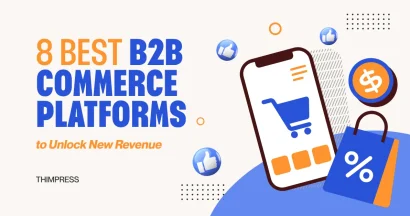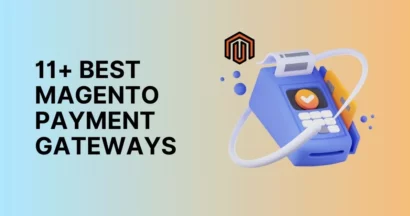Shopping has gone beyond the physical store. Today’s customers expect a smooth journey, whether they’re browsing on their phone, visiting your store, or chatting on social media. That’s why you need to know about Magento Omnichannel.
Think of it as your secret weapon to bridge the gap between online and offline. Imagine customers seamlessly moving between browsing your website, checking stock in-store, and even returning online purchases to a physical location. It’s all about creating a unified experience that keeps them coming back for more.
But why Magento? Well, it’s a platform built for flexibility and power. You can connect all your channels, manage inventory across the board, and offer options like click-and-collect or in-store returns. Plus, with Magento’s expansive ecosystem of extensions and tools, you can tailor it to your specific needs.
So, if you’re ready to ditch the one-channel limitations and embrace the future of retail, buckle up and join us on this exploration of Magento Omnichannel!
Ready to unlock the omnichannel magic? Let’s go!
What Is Omnichannel? – Magento Omnichannel
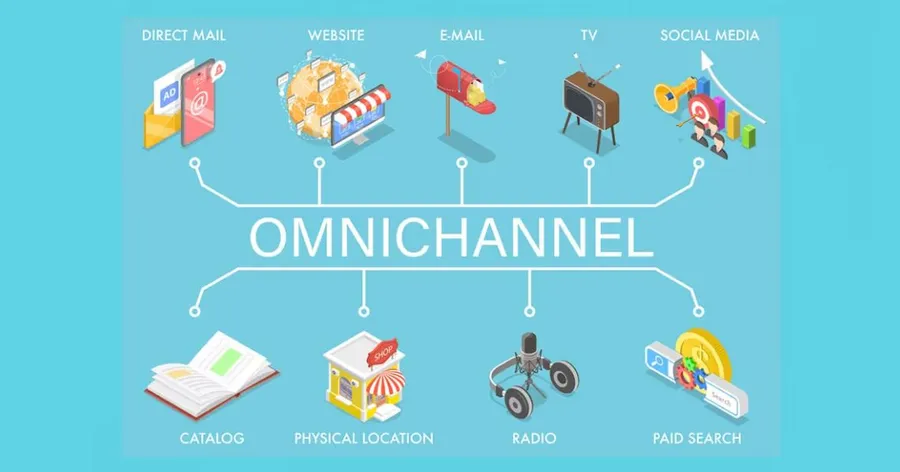
Omnichannel is a business strategy that aims to provide a seamless and consistent customer experience across all channels, both online and offline. This means that whether a customer is shopping in a physical store, browsing on a website, or using a mobile app, they should have the same positive experience.
To achieve this, businesses need to integrate their different channels and systems so that they work together seamlessly. This includes things like making sure that product inventory and pricing are accurate across all channels, allowing customers to easily return or exchange items purchased online in stores, and providing consistent customer service across all touchpoints.
What Is The Difference Between Omnichannel vs. Multichannel?
While both omnichannel and multichannel strategies involve selling products or services through multiple channels, they differ significantly in their focus and how they create a customer experience.
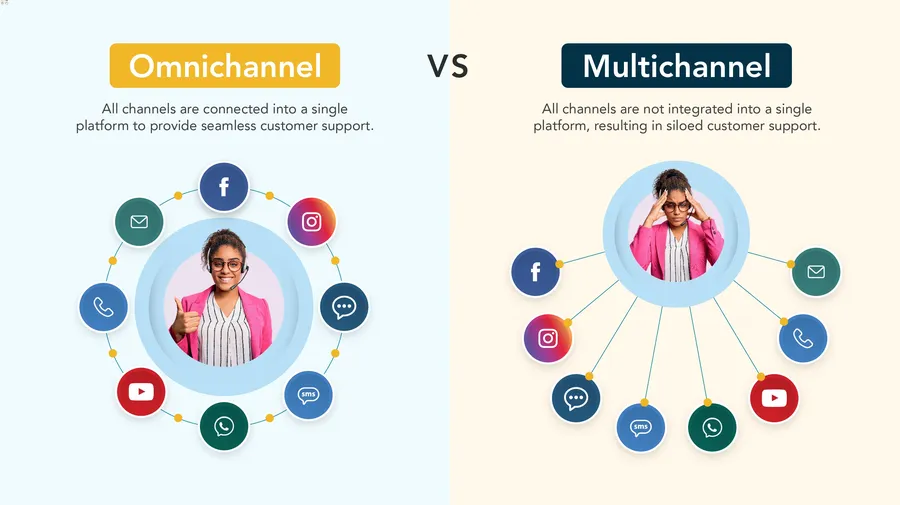
Multichannel:
- Product-centric: Focuses on pushing products or services through various channels like online stores, physical stores, social media, and marketplaces.
- Separate channels: Each channel operates independently with its inventory, promotions, and customer data.
- Disjointed experience: Customers might encounter inconsistencies in pricing, product availability, and customer service across different channels.
Omnichannel:
- Customer-centric: Prioritizes creating a seamless and consistent customer experience across all touchpoints, regardless of the channel used.
- Integrated channels: Data, inventory, and promotions are synchronized across all channels, providing a unified view of the customer.
- Holistic experience: Customers can easily switch between channels, pick up where they left off, and receive personalized service.
Here’s a table summarizing the key differences:
| Feature | Omnichannel | Multichannel |
| Focus | Unified customer experience across all channels | Reaching customers across multiple channels |
| Channel Integration | Channels are seamlessly integrated and data flows freely | Channels operate independently with limited data sharing |
| Customer Journey | Journey flows smoothly across channels, regardless of starting point | Journeys are specific to each channel and may not connect |
| Personalization | Customers receive personalized experiences across all touchpoints | Personalization may be limited to individual channels |
| Data Insights | Comprehensive data analysis across all channels for better decision-making | Channel-specific data insights, limiting full view of customer behavior |
| Technology: | Requires a central platform with API integrations | May rely on independent platforms or point-to-point integrations |
| Benefits | Increased customer engagement, loyalty, and revenue | Improved reach, brand awareness, and sales |
| Complexity | More complex to implement and manage | Relatively simpler and less resource-intensive |
| Scalability | Highly scalable to accommodate growth | Limited scalability as channels add complexity |
| Examples | Starbucks, Nike, Apple | Amazon, eBay, Walmart |
Benefits of Using Omnichannel Strategy
Omnichannel provides a win-win situation for both customers and businesses, creating a seamless and rewarding experience for everyone involved.
Better Customer Experience and Loyalty:
- Customers enjoy a seamless shopping experience across all channels.
- Increased customer loyalty as a result of superior service.
Improved Customer Retention:
- Successful omnichannel strategies can retain up to 89% of customers.
- Provides a reliable income stream, reducing the need for constantly seeking new business.
Efficient Complaint Resolution:
- Faster resolution of issues and queries, leading to a better overall customer experience.
Enhanced Business Insights:
- Collection and analysis of data from different sales channels.
- Accurate understanding of customer behavior, aiding better decision-making.
Diversified Business Channels:
- Reduced dependence on a single channel, providing a cushion against unforeseen challenges.
- Statistics show that campaigns across multiple channels outperform single or dual-channel efforts by 300%.
Inventory Management:
- Real-time observation and management of stock levels.
- Optimization of inventory across all channels, minimizing out-of-stock events.
Increased Footfall in Physical Stores:
- Omnichannel strategies attract more customers to physical stores, with 81% of in-store shoppers researching online before purchasing.
Personalized Shopping Journey:
- Personalization leads to increased conversion rates and customer retention.
- Customers are more likely to purchase and remain loyal to a brand with a personalized experience.
Cost Savings and Improved Satisfaction:
- Unified inventory management leads to cost savings.
- Improved customer satisfaction through optimized supply chain management.
Enhanced Data and Insights for Marketing:
- Collection and analysis of data from various channels.
- Informed marketing campaigns and promotions based on actual data.
Reasons To Choose Magento 2 as an Omnichannel Platform: Magento Omnichannel
Magento 2 offers a robust and flexible platform for building a successful omnichannel strategy. Its features, integrations, and customization options make it ideal for businesses of all sizes looking to deliver seamless and personalized shopping experiences across multiple channels.
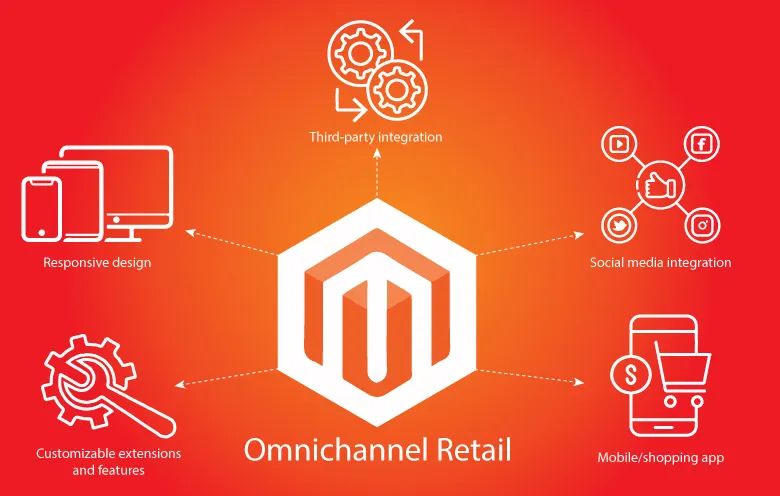
Flexibility and Scalability – Magento Omnichannel:
- Magento 2 offers high flexibility and can be adapted to various business needs and industries.
- It can easily scale to accommodate growing traffic and sales volumes.
- This is evident by its use by large brands like Land Rover, Timex, and Kurt Gieger.
Powerful Third-Party Integrations – Magento Omnichannel:
- Magento 2’s API-led architecture allows seamless integration with numerous third-party Magento 2 extensions and plugins.
- This allows you to craft a personalized omnichannel strategy tailored to your specific needs.
- Some third-party integrations for the best Magento Omnichannel solution are Magestore for multi-channel inventory management, Social Login by Miniorange for easier logins, and Fooman Connect for financial data management.
Personalized Shopping Experience – Magento Omnichannel:
- Magento 2 offers a wide range of extensions for personalization, including product recommendations, price per customer, and email templates.
- This allows you to deliver relevant experiences and offers to individual customers, boosting engagement and conversion rates.
Security and Payment Options – Magento Omnichannel:
- Magento 2 is a secure platform, making it ideal for online transactions.
- Additional security measures, like SSL certificates and secure hosting, are readily available.
- It also offers a variety of reliable payment gateways, giving customers flexibility and confidence.
Multi-channel Selling – Magento Omnichannel:
- Magento 2 facilitates selling across multiple channels, including online stores, social media platforms, and marketplaces.
- This expands your reach and allows customers to find and purchase your products wherever they are.
- Some famous extensions, like Walmart Integration and Google Shopping, simplify multi-channel management.
Enhanced In-store Experience – Magento Omnichannel:
- Magento 2 helps bridge the gap between online and offline experiences.
- You can offer features like online inventory availability, in-store purchases with online payment, and personalized communication via WhatsApp.
- This creates a seamless and convenient shopping experience for customers.
PWA Capabilities – Magento Omnichannel:
- Magento 2 allows you to convert your stores into PWAs, offering app-like experiences without requiring native app development.
- This improves performance, engagement, and offline accessibility.
- Some helpful extensions, like the Magetop Magento PWA Module, make PWA implementation easy.
Multilingual Capabilities – Magento Omnichannel:
- Magento 2 supports displaying web pages in multiple languages, catering to a global audience.
- This expands your reach and removes language barriers for potential customers.
- Some useful extensions, like Magento 2 Store Switcher and Magento 2 Multi-Language, simplify multilingual management.
Powerful Reporting – Magento Omnichannel:
- Magento 2 provides comprehensive reporting tools to track customer behavior, inventory, and sales across all channels.
- This data-driven approach helps you identify trends, optimize operations, and improve customer experiences.
- Some extensions, like Advanced reports by Amasty and Magento 2 Inventory Report, enhance reporting capabilities.
Easy Finance Management and Taxation – Magento Omnichannel:
- Magento 2 integrates with various finance and tax management extensions, streamlining financial operations across channels.
- This simplifies accounting and compliance, saving you time and resources.
- Extensions like TaxJar Sales Tax Automation and VAT Exemption automate tax calculations and compliance.
Mobile Commerce Friendly – Magento Omnichannel:
- Magento 2 themes are typically mobile-friendly, catering to the growing mobile shopping trend.
- Additional extensions like Mobile Apps and Mobile App Builder can further enhance mobile experiences or you can refer to some of the best Magento mobile app builders for iOS & Android.
Final Thoughts
Magento Omnichannel isn’t just a tool, it’s an investment in your future. It’s about meeting your customers where they are, exceeding their expectations, and building lasting loyalty. So, take the first step on your omnichannel journey today. Explore the possibilities with Magento, and watch your online store transform into a thriving ecosystem of customer engagement and growth.
Read More: Top Magento 2 AI ChatGPT Extensions
Contact US | ThimPress:
Website: https://thimpress.com/
Fanpage: https://www.facebook.com/ThimPress
YouTube: https://www.youtube.com/c/ThimPressDesign
Twitter (X): https://twitter.com/thimpress
